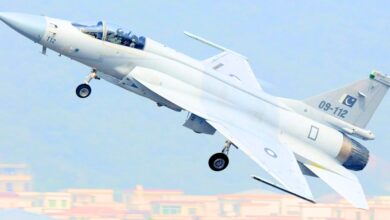
Iran is Now Sending Oil to Oman and Bangladesh
Iran has started sending small amounts of crude oil to new countries like Bangladesh and Oman. This move shows that Iran is working hard to keep its oil production at its highest level in five years.
Oil sales are crucial for Iran’s economy, which is struggling due to economic problems. The country has been trying to find ways to get around US sanctions that were put in place by former President Donald Trump in 2018 because of concerns over Iran’s nuclear program.
Iran is not bound by the oil production limits set by the Organization of the Petroleum Exporting Countries (OPEC). Instead, it is focusing on increasing its oil output and exports to boost its economy during its ongoing crisis.
New Trade Routes
Oil Minister Javad Owji mentioned in July that Iran is now selling oil to 17 countries, including some in Europe. However, this information hasn’t been confirmed. China is Iran’s biggest customer for oil, even though it’s against US sanctions.
In a recent development, a tanker called the Golden Eagle was seen near Chittagong in Bangladesh earlier this year. This tanker received oil from another ship that had picked it up from Iran’s Kharg Island. The Golden Eagle transferred part of this oil to smaller tankers near Chittagong in April, according to satellite data tracked by Claire Jungman from the advocacy group United Against Nuclear Iran.
Bangladesh Petroleum Corporation, which runs the main refinery in Bangladesh, said it did not buy this oil and could not identify the actual buyer. The owner of the Golden Eagle could not be reached for comments, and Iranian officials also did not respond to requests for information.
Impact of US Sanctions
Iran’s oil exports had dropped significantly to about 250,000 barrels per day in 2019-2020 due to US sanctions. However, since President Joe Biden took office and started discussions with Tehran, Chinese refineries have been buying more Iranian oil despite the sanctions. Critics argue that the Biden administration’s efforts to revive the 2015 nuclear deal led to less enforcement of the sanctions. As a result, Iran may have sold around $70 billion worth of extra oil in the past three years.
Current Oil Production and Export Trends
Iran’s oil production has now risen to more than 3.2 million barrels per day, the highest since 2018, according to OPEC figures. This is despite ongoing US sanctions. Iran’s oil exports have reached their highest level this year, with the strongest three-month period from March to May since mid-2018.
However, the growth in export volumes seems to be leveling off. Some of Iran’s oil is being sent to Syria, but these shipments are lower than in previous years. There is uncertainty about whether Iran is receiving payment for this oil or if it is being given as aid to Syria and possibly Hezbollah.
In addition to Bangladesh and Oman, Iranian oil has also been delivered to China’s northeast port of Dalian, adding another new destination. Traders often disguise Iranian oil as coming from other countries like Malaysia, Oman, or the UAE when it is sent to China.
Overall, Iranian oil exports have stabilized at around 1.5 million barrels per day since February.
Iran’s Oil Production and Export Trends
Iran has recently found new markets for its crude oil, with shipments now reaching Oman and Bangladesh, according to a Reuters report on Friday. This comes as Iran’s oil production has surged to its highest level since 2018, despite ongoing U.S. sanctions.
Earlier this year, oil tankers were seen near ports in Bangladesh and Oman, based on shipping data tracked by Reuters.
Export Expansion
Iran’s Petroleum Minister, Javad Owji, mentioned in July that Iran is currently exporting oil to as many as 17 different countries. This shows a significant increase in Iran’s global oil market presence.
Production Levels
In July, Iran’s crude oil production averaged 3.22 million barrels per day (bpd), the highest level reported by Reuters since 2018. This is a substantial rise from earlier levels.
Impact of Sanctions
Despite U.S.-led Western sanctions, Iran has managed to offset their impact on its oil exports. The country has also started to export more gas condensate, a very light form of oil, adding value to its oil sector.
Production Growth

Under the current administration, Iran’s oil production has increased by 60%, rising from 2.2 million bpd in 2021 to 3.6 million bpd now. This boost has helped increase Iran’s annual oil revenue to $28.4 billion, up from $9 billion in 2020.
Recent Export Boost
Iran’s oil exports have recently reached a six-year high, as shown by various ship-tracking data. For the year ending March 19, 2024, Iran has increased its oil and gas production by 20% compared to the previous year.
Future Plans
Iran plans to further increase its crude oil production to 4 million bpd, according to a report by the Tasnim news agency in May.
Overall, Iran is successfully expanding its oil production and export activities despite international sanctions, with new markets and increased revenues highlighting its growing influence in the global oil market.






